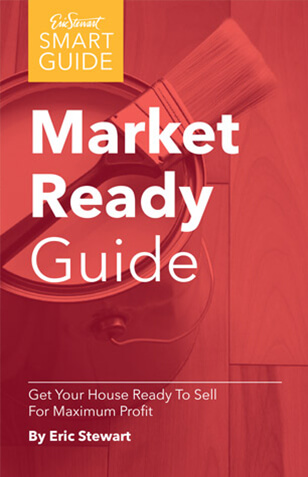BLOG
5 Factors To Consider When Determining The Asking Price On Your Home
Eric Stewart ● September 2, 2015

5 Factors To Consider When Determining The Asking Price On Your Home
One of the biggest decisions that must be made when selling your home is determining the asking price. There is a direct relationship between how your house is priced and how many buyers will be interested in it.
If you are trying to get top dollar and need to ask a premium price, you will probably not attract as many buyers as you might want, especially if the price you are asking is inconsistent with your area’s history.
Consider the following five factors when setting a price for your home:
Tax Assessment
Don’t be fooled by your tax assessment. Tax assessments are not a way of evaluating a home’s market value. Much of the criteria that inform an assessment are not related to the sale price of your home.
Fulcrum Pricing
Pricing on the fulcrum broadens the range of people who will look at your house. For example, if you price your home at $500,000, you can expect interest from buyers in both the $400,000-$500,000 range and the $500,000-$600,000 range.
Comparative Market Analysis (CMA)
Your real estate agent should provide you with a CMA, which shows the prices of comparable, recently sold homes and also similar homes that are currently on the market. The active homes are your competition, so make sure you have a clear understanding of how they compare to your house. Your agent should explain to you why each home was included in the CMA and whether any other comparable homes were eliminated from the CMA. Here are some criteria to evaluate when reviewing the CMA:
- Comparable Area/Location: In any given part of your county, some areas demand a higher price than others and your Realtor® should understand your area or neighborhood and how it compares to the surrounding areas/neighborhoods.
- Market History for Your Area: It is important for your Realtor® to show you the price history of your area and how the trends have been over the last three to 12 months.
- Home Style: Some floor plans of homes are more desirable and demand a higher price. Colonials sell for more than split-levels, split-levels sell for more than bi-levels, for instance.
- Home Size: Make sure that you are comparing your home to homes that are of similar type and square footage. This will help you compare apples to apples and give you a clear price range.
- Home Condition: If you are not in a position to make necessary fixes prior to putting your house on the market, buyers will ask for the price to reflect needed improvements.
- Lot: Generally, flag lots and lots backing to power lines or in front of roads with double yellow lines are not desirable. Lots backing to parkland are attractive. If you bought your home at a premium or discount based on the type of lot, you will need to pass that pricing on as you look to sell it.
My Puddle Economic Theory is that rain fills the low-lying areas first. Similarly, demand runs to areas that have the perceived best value. Once these areas rise in value, the flow of value runs out to surrounding areas, increasing home values in general.
Appraisal
An appraisal is based on what has already happened and can be a predictor of value. However, think of placing your home in a tide at the beach. You must recognize whether it is coming in or going out and plan accordingly
Don’t Chase the Price Down!
If the value of your house is dropping due to market trends, you need to take that into account. Generally, it is best to lower the price of your house before the market drops. That way, prospective buyers will see that your house is priced realistically relative to comparable homes. Ask your agent for advice on predicting the market and setting a reasonable price for your property. Adjusting the price according to the market instead of your personal preference is the best way of attracting interested buyers.
With the Internet, the average consumer can see the inside of your house, the outside of your house, and a satellite map of your lot. You will literally have hundreds, if not thousands, of people see your house virtually and decide if they think the value is there. If you aren’t getting showings, it is most likely a price issue. Price reductions are a valuable tool for renewing interest in your property.
When inventory in your area is low and the market is fluid, you can test the market by offering your property at a price a little higher than recent comps. After a couple of weeks, you will know if the demand is there. If not, it’s probably time to adjust your price.
When inventory is higher and a trend of slowing sales occurs, pricing below most current sales is the surest way to draw an offer and potentially create an environment for competing offers.
For more guidance on navigating the complexities of selling a home, contact the real estate professionals at the Eric Stewart Group. For over 27 years, we have been helping clients across the metro area sell their home for top dollar. For additional tips, download our FREE Market Ready Guide.

{{cta(‘eecb350f-424d-4313-b789-f3a7fafaf08e’)}}




